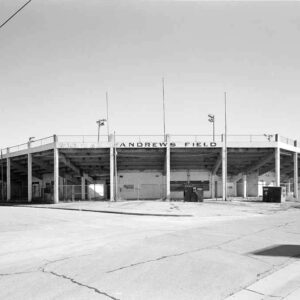calsfoundation@cals.org
Charity Games of Football (1931)
By 1931, the Great Depression had produced hardship and suffering in all areas of Arkansas. Unemployment, grinding poverty, and the devastating Drought of 1930–1931 had produced myriad challenges for the state and its residents. Still, Arkansans loved their sports, in particular football. Harvey C. Couch, founder of Arkansas Power and Light (AP&L) and member of the Arkansas Advisory Committee of the President’s Organization on Unemployment Relief, saw an opportunity to raise funds with charity football games.
On November 9, 1931, Couch met with representatives from six Arkansas colleges at the Marion Hotel in Little Rock (Pulaski County). The meeting produced a plan that called for a series of college football games to be played during the first week of December following the conclusion of the 1931 season. It was agreed that the games would be played at neutral sites. The proceeds from the games would be divided between the host city and each of the respective college’s communities, where they were to be distributed to local charities.
Initially, the colleges slated to compete in these games were: Hendrix College, Arkansas State Teachers College (now the University of Central Arkansas), Ouachita Baptist College (now Ouachita Baptist University), Henderson State Teachers College (now Henderson State University), Arkansas Polytechnic College (now Arkansas Tech University), and Monticello A&M College (now the University of Arkansas at Monticello). Other schools expressing interest in playing charity games were: College of the Ozarks (now University of the Ozarks), First District A&M College (now Arkansas State University), Arkansas College (now Lyon College), and Magnolia A&M (now Southern Arkansas University). Even the University of Arkansas (UA) in Fayetteville (Washington County) expressed interest in playing a charity game. However, the university was unable to obtain clearance from its conference to participate and withdrew from consideration.
Finally, a handful of high school football programs also expressed interest in playing games for charity. Soon thereafter, the Arkansas Athletic Association, the governing body of high school athletics, granted high schools permission to participate.
Events were hastily arranged, and logistical issues and schedule conflicts eventually claimed all but two of the proposed college contests. Only the Ouachita Baptist vs. Arkansas Tech game scheduled for December 4 and the Monticello A&M vs. College of the Ozarks game scheduled for December 5 were played. At the Pine Bluff (Jefferson County) athletic field, Monticello A&M throttled the College of the Ozarks by a score of 20–6. The featured charity game, however, was played between the Tigers of Ouachita and the Wonder Boys of Arkansas Tech.
During the late 1920s and 1930s, these two schools had dominated play in the Arkansas Intercollegiate Conference (AIC). In 1931, the Wonder Boys claimed the AIC title with a 6–1–2 record. Their one loss came in a non-conference game. While the Tigers finished with a record of 6–1–1, their record included one conference loss. From 1929 to 1931, the Tigers and Wonder Boys had played to ties of 7–7, 6–6, and 0–0. Then the charity game at Andrews Field in Fort Smith (Sebastian County) provided an opportunity for the two teams to play each other one more time.
Determined to prove their mettle, the Wonder Boys rode the fortunes of Bid Jeffries, their star halfback from McCrory (Woodruff County). Jeffries ran all over the beleaguered Tigers defense. On the other side of the ball, the Wonder Boys defense dominated the Tiger offense. At the final gun, Arkansas Tech prevailed by a score of 13–0, out-gaining the Tigers in total yards of scrimmage, 295–97.
Meanwhile, high school games were played at Smackover (Union County), between Smackover’s Standard-Umsted High School and schools from Norphlet (Union County) and Louann (Ouachita County), in a “quadrangular charity tournament.” The quadrangular tournament called for the four teams to square off and play in two fifteen-minute quarters. Then, each of the winning teams would play one another in a fifteen-minute affair, determining the winner of the tournament.
First, Norphlet took on Standard-Umsted, with Norphlet taking the contest by a score of 6–0. Louann defeated Smackover by the same score, 6–0. In the tourney final, Norphlet knocked off Louann by a score of 19–0. At El Dorado (Union County), El Dorado defeated Morrilton (Conway County) 19–6.
A lively discourse in the newspapers preceded the Ouachita–Arkansas Tech game and provided football fans with compelling storylines. In terms of raising money for charity, however, the venture, on the whole, was a failure. At Pine Bluff, the game’s gate receipts barely covered expenses, while at Fort Smith only 2,500 fans turned out. This was far fewer than expected, and there is no evidence of other charity games in subsequent years.
For additional information:
“Arkansas Tech Willing to Play Charity Game.” Arkansas Gazette, November 10, 1931, p. 12.
“Charity Football Arouses Interest.” Arkansas Gazette, November 14, 1931, p. 16.
“Charity Football Game Won by Norphlet.” Arkansas Gazette, December 5, 1931, p. 20.
“College Teams Matched for Post-Season Games.” Arkansas Gazette, November 22, 1931, p. 17.
“El Dorado Beats Morrilton 19-6.” Arkansas Gazette, December 6, 1931, p. 16.
“Monticello A & M Defeats Ozarks at Pine Bluff.” Arkansas Gazette, December 6, 1931, p. 17.
“Morrilton and El Dorado Will Meet Saturday.” Arkansas Gazette, December 1, 1931, p. 14.
“Ouachita and Tech Battle An Hour In Scoreless Tie.” The Arkansas Gazette, November 12, 1931, p. 17.
“State Colleges to Play Charity Football Games.” Arkansas Gazette, November 10, 1931, p. 12.
“Tech and Ouachita Get Title Debate Ironed Out.” Arkansas Gazette, December 1, 1931, p. 14.
“Tech Scores 13-to-0 Win in Battle with Ouachita.” Arkansas Gazette, December 5, 1931, p. 21.
“University May Play For Charity.” Arkansas Gazette, November 12, 1931, p. 16.
“Will Make Plans For Charity Games.” Arkansas Gazette, November 21, 1931, p. 16.
Paul Edwards
Boston, Massachusetts
 Andrews Field
Andrews Field  Harvey Couch
Harvey Couch 




Comments
No comments on this entry yet.